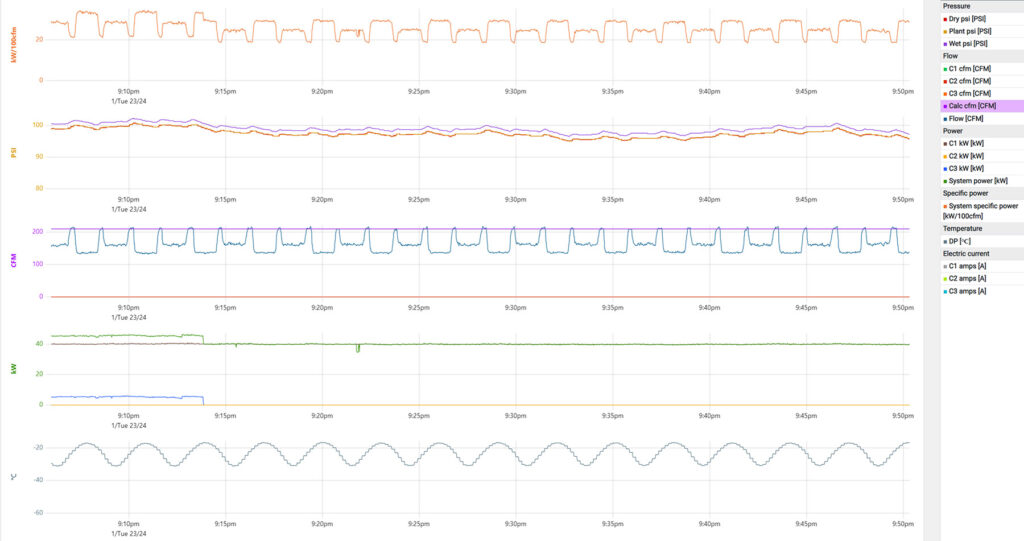A compressed air auditor was monitoring a system in a plant that produces plastic film. Part of the measurement involved analyzing the flow from the compressor room and the dewpoint of the compressed air. When examining the data, a strange pattern developed on the flow and dewpoint profiles (Fig. 1). We can see the output flow of the compressor alternated in a high-low pattern and the dewpoint output fluctuates in a similar pattern, with worse dewpoint when drying on the side drying with the lowest purge. This poor dewpoint is caused by inadequate regeneration. An internal valve failure is leaking moist air from the side that is drying to the side regenerating, interfering with proper operation.

If you have an unbalance, this could be caused by a number of problems:
- Desiccant degradation: Over time, the desiccant material can degrade or wear unevenly, especially if a previous failure flooded the offending side. If one side of the dryer uses degraded desiccant, it won’t be as effective in removing moisture, leading to a higher dew point on that side.
- Purge flow issues: The purpose of the purge flow in a desiccant dryer is to regenerate the desiccant material by removing the accumulated moisture. If the purge flow is uneven (due to valve issues, piping problems, or flow control malfunctions), one side of the dryer will not be effectively regenerating the desiccant, leading to a higher dew point.
- Valve malfunction or misalignment: Valves control the flow of air through the dryer and the switching between the towers for regeneration. If these valves are not functioning correctly or leaking, it could lead to an imbalance in how the desiccant beds are used and regenerated.
To identify the specific cause in each situation, a thorough inspection and diagnostic of the dryer system, including checking the desiccant condition, valves, controls, and measuring pressure and flow rates at various points in the system would be necessary. Regular maintenance and monitoring are key to ensuring consistent operation and avoiding such issues.
Filed Under: Components Oil Coolers, Compressed Air Technologies, Pneumatic Tips, Technologies